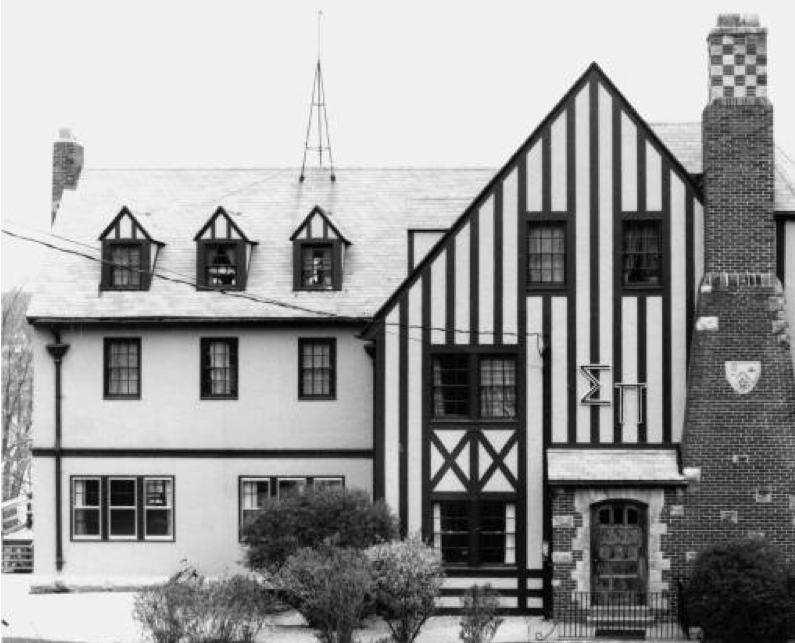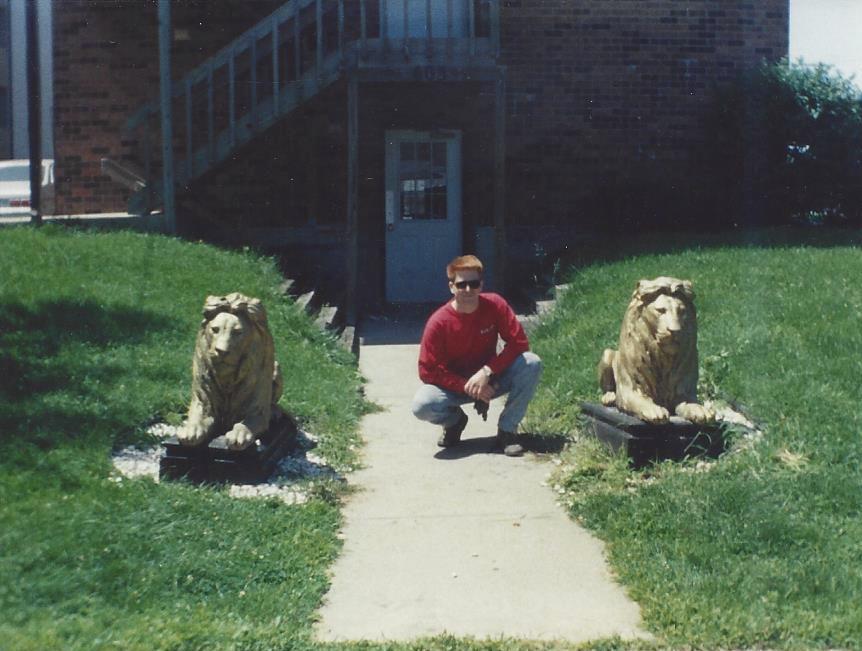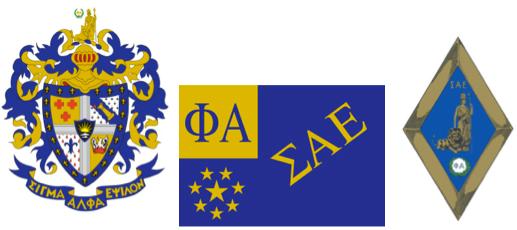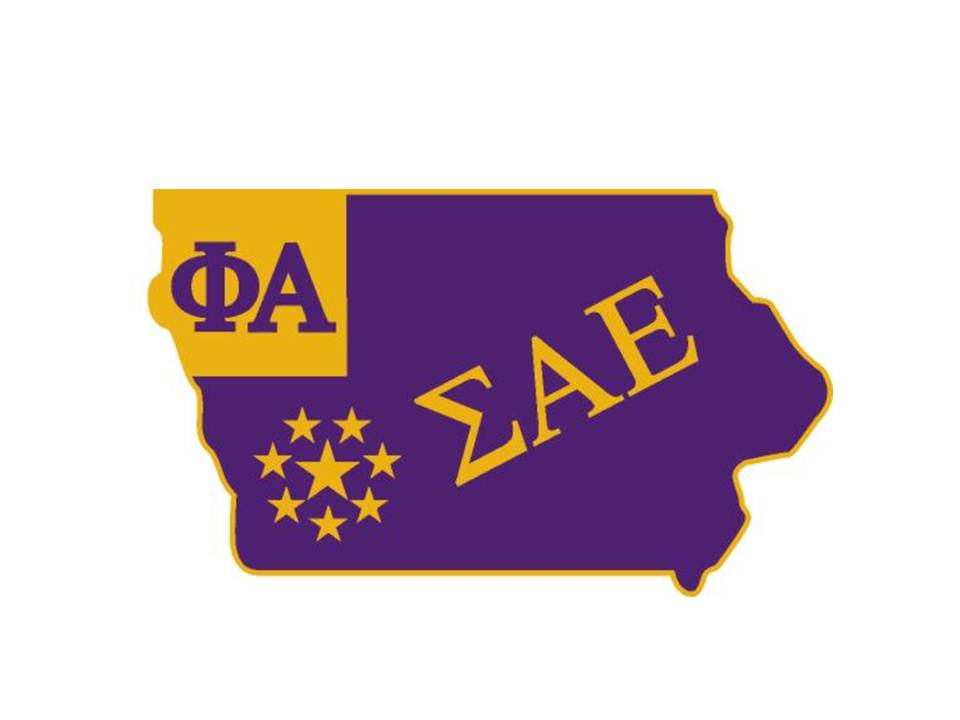Timing was perfect when SAE made transition out of "The Lodge" in the summer of 1992
In the summer of 1992, Iowa Beta chapter of Sigma Alpha Epsilon upgraded its living quarters and moved to 707 N. Dubuque Street. Though this was a new beginning, it also was the end of story that began in 1982.
After dwindling away in the late 1970s, the chapter was restarted in 1982. At the time, there were no funds and there was no chapter house. Therefore, there was no official place to gather, meet, hold parties or house the men. Luckily, a temporary structure was secured in time for fall 1983 that served as an interim chapter house.
A boarding house was under construction at the corner of Dubuque and Prentiss Streets. The address was 603 South Dubuque Street. It was close to campus, downtown Iowa City and the sororities. Iowa Beta rented the structure for its interim home.
The house was nicknamed “The Lodge” for its unconventional appearance, and it did not have the amenities customary for fraternity use. It also was quite expensive. Ultimately, it served Iowa Beta well for nearly a decade, but it had become time to move to a better, more traditional structure.
Living in The Lodge was a great experience for the men of Iowa Beta at the time.But the structure was never designed or built for fraternity use.The sleeping rooms were quite small, being 10' by 10’.They were equipped with a sink and a small refrigerator, but very little in the way of closet space existed. One of the sleeping rooms was turned into a library.
Eight rooms on the first floor were converted to the only common area space, which was called the Great Room. It could hold a party and serve as a space for a meeting or almost any kind of gathering. The downside is that it was the only common area option for functions and therefore it was hard to keep clean and maintained. This resulted in another nickname, the “Not-So-Great Room.”
A major drawback of being a renter was getting landlord approval to make any modifications and if there was a problem, such as a leaky faucet or a heater going out, SAE had to wait for the landlord to get around to fixing the problems.
.png)
Over time, the daily wear and tear of hundreds of young college men caused The Lodge to begin to deteriorate and the landlord was very slow to make repairs.
One of the primary driving forces for the chapter to seek a new dwelling space is because the current landlord was charging the house slightly more than $60,000 a year –an enormous sum for the day.It was time to move on.
“Every dollar we raised was going to pay the rent,” said Steve Cary (IABE ’92), who served as eminent archon in 1990. “We did not have a kitchen or a designated room for dining. We didn’t have the common areas that most traditional fraternities enjoy. But the most important thing we wanted was ownership and the ability to control our own destiny.”
Cary came from Barrington High School and was freshman at Iowa in the fall of 1988. He graduated in May of 1992 and left Iowa City to begin his career in pharmaceuticals, where he was a representative for GlaxoSmithKline in Washington D.C.
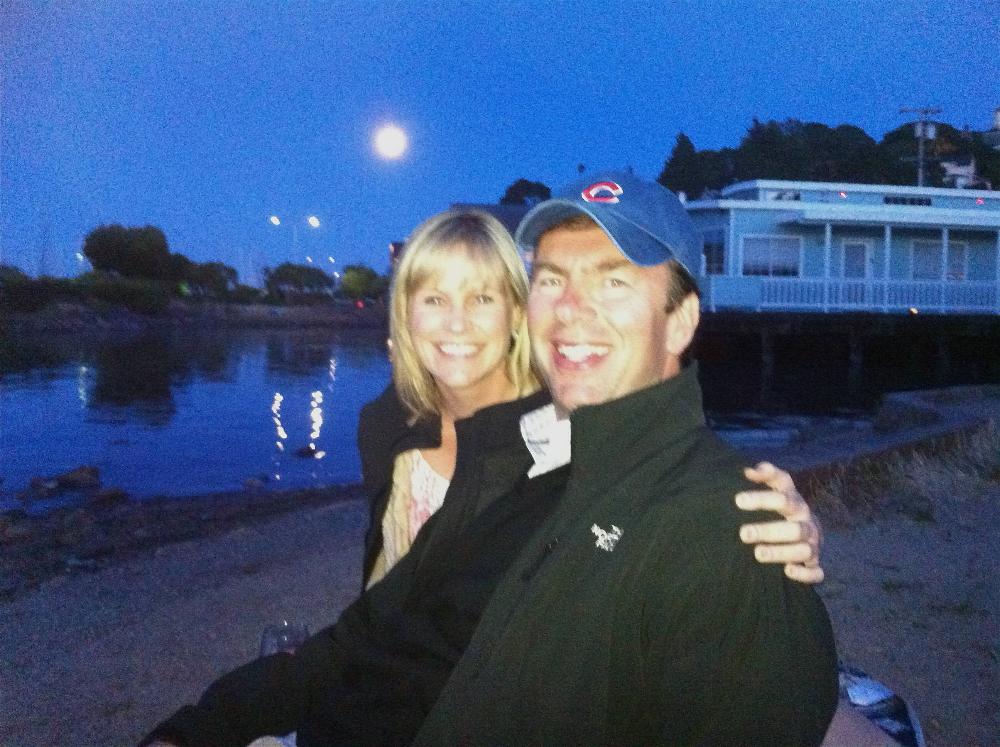
“We thought if we bought a house, the cost of ownership could be less than what we were paying the landlord and then we could build equity,” Cary said. “And you could have all the benefits of home ownership. You could control your own destiny in that you no longer were at risk of being kicked out or have the rent raised.”
The fraternity kicked around some grandiose plans, including purchasing a lot at Clinton and N. Dubuque Street. The lot was near the president’s house and the Tri Delta sorority house.
“At the time, the lot was zoned where we could have bought it and built a fraternity house,”Cary said. “But that goal was very ambitious – more than $1 million and we just could not get the traction to support this effort.”
Word was circulating through fraternity circles that Sigma Pi was financially on the ropes and in a position where they could no longer pay their mortgage, taxes and bills. They overspent on remodeling their home and did not rush enough members to pay for the increased costs. This was going to cycle them out of their house and open up an opportunity for Iowa Beta to take occupancy.
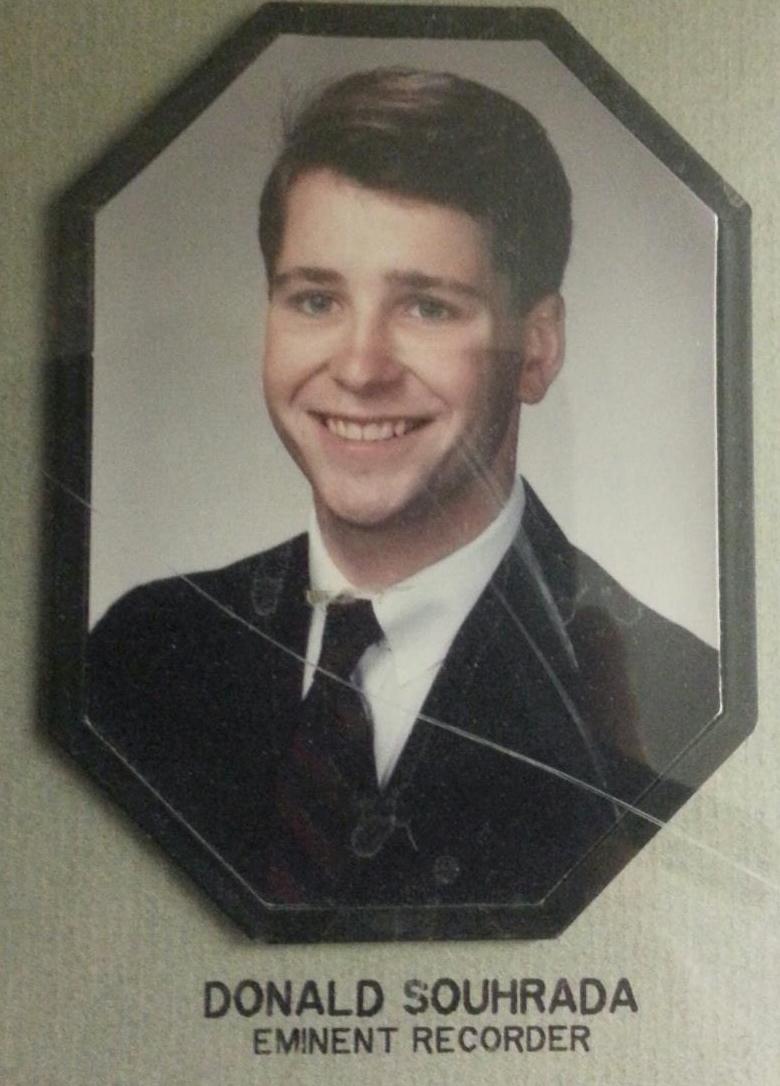
Iowa Beta could pay its bills and always paid them on time, but did not have cash reserves for a down payment. The structure was purchased from Sigma Pi on a lease-to-own basis. This would become the SAE chapter house for the next few years.
“It was a good thing we got the house in a lease-to-own agreement the first year before the title even transferred,” said Don Souhrada (IABE ’93). “We had very little money in our checking account.”
Souhrada came to Iowa City from the Quad Cities in the fall of 1989 and pledged in the spring of 1990. A journalism major, Souhrada served as eminent archon in 1993. He graduated in December of that year and began his career fundraising at Indiana University. Today, Don serves as the fundraising chairman for the Iowa Beta Alumni Association.
A handful of brothers helped moved assets from The Lodge to the 707 N. Dubuque house that summer. In the fall, all the men pitched in to get the new house ready for another busy year.
Iowa Beta’s new home, located on the Iowa River, offered the same amount of occupancy as The Lodge, approximately 30 men. But what made it more attractive was it its proximity to other fraternities and it had common areas, most importantly a kitchen and dining space.
“It was a traditional fraternity house on the river,” said Cary. “It just had a better feel to it. It was a lot larger and when SAE moved in, it had recently been renovated by Sigma Pi.”
Souhrada agreed.
“It had a basement where we could have parties that was separate from the main living area. It had a sun room where we could watch TV and hang out,” he said. “It was just a lot more comfortable.”
Without a kitchen, the men who lived in The Lodge had to have meals catered.
“Plates would sit in the sink and bar area and create a smell until the caterer eventually came by to collect them,” Souhrada said. “Because the new house had a full kitchen, it allowed us to hire a cook.”
In addition to finding better accommodations than The Lodge, the Iowa Beta brothers also had to adapt to continuously changing rules regarding social events.

In the early 1980s, the university did not tightly restrict social events and kegs of beer could be used for parties. Though kegs are much more cost effective, the rules of the game changed. The drinking age was raised to 21 years old and a focus on risk management took hold when the Dram shop laws came into effect. This led to kegs being outlawed so fraternities turned to bottles and cans.
“You could not have kegs in the house,” Cary said. “And you had to register your party in advance with the Interfraternity Council. You had to have a guest list and the IFC would send over party checkers twice during the event to make sure you had an appropriate ratio of food to alcohol and that we were monitoring the guest list.”
Nobody was to be admitted to a party without being included on the guest list and all parties were required to have a number of people serve as designated drivers.
If a party checker asked someone at the party for their ID and they proved to be underage, the fraternity and/or sorority would have to come before the Standards Board and explain why a minor was served.
Parties are very memorable and fun, but there is much more to fraternity life than social events.
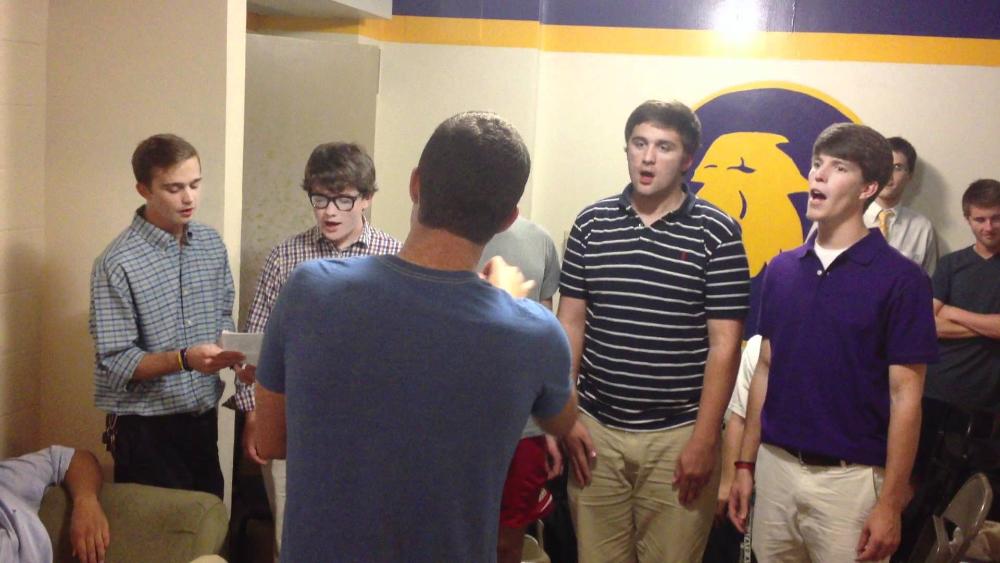
Since its re-founding in the early 1980s, Iowa Beta has always been regarded as one of the top-tier fraternities.The Chapter consistently ranked as among the strongest in grades, intramurals, philanthropic activities and numbers of members.
When Souhrada came to campus, he said SAE had an excellent reputation as the preeminent fraternity, which made rushing new members a lot easier because men were attracted to the accomplishments and positive presence of the chapter.
Word of SAE’s strong participation in the community had reached every corner of the student body. But SAE also had very creative parties; the brothers worked hard and played hard.
“Jeff Green (IABE ’91), Chris Mugge (IABE ’92) and Steve Rojewski (IABE ’92) did some phenomenal work as our social chairs and it really paid off when we rushed,” Souhrada said.
He also fondly recalls wonderful memories of the brothers serenading sororities and singing the songs of SAE at meetings.
“We did not have the best voices or anything, but we knew and sang the SAE songs for sure,” he said.
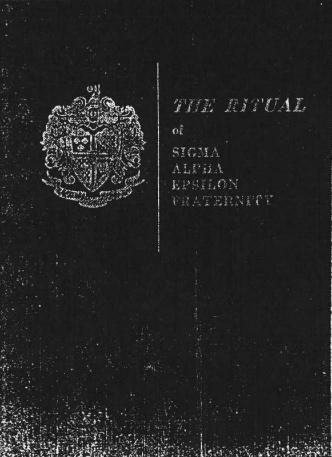
He said there was concerted effort to conduct ritual properly.
“We would get a room in the Iowa Memorial Union and get all the props and conduct the ritual,” Souhrada. “In the back of the ritual book there was an explanation of what to do. We would refer to that.”
“We had a lot of guys who were leaders on campus, for example Bill Baedke (IABE ’92),” said Souhrada. “We had guys involved in IFC, student government and other roles on campus. Our strength is that we had smart guys who wanted to lead.”
Souhrada said he shared some great times with the men in those years, specifically Erik Daley (IABE ’95), Matt Penar (IABE ’93), Bob Wright (IABE ’91) and Bob Frey (IABE ’94).
“Daley was from Santa Monica and he and I were looking for a similar outcome from our fraternity experience,” Souhrada said. “We wanted to have a fun, positive experience and let the chapter vault us into our careers. We didn’t just want to live in the moment and party all the time. We wanted to accomplish something that would benefit us when we graduated.
“Erik and I were a great team for brainstorming ideas and working on issues that the chapter faced. We encouraged each other to step up.”
Penar was a pledge brother and served as Eminent Treasurer. Daley succeeded Souhrada as Eminent Archon.
Souhrada also said that during social events, he turned to Frey from Clinton and Wright from West Des Moines to be his wingmen.

“Frey, Penar and I all lived on the ground floor the first year we lived in The Lodge,” Souhrada said.
Because they were adjacent to the only common area, the sleeping rooms on the first floor of the The Lodge were like living on Bourbon Street in New Orleans, according to Souhrada.
“You were in the middle of all the parties, heard all the foot traffic, the toilets flushing and there was the least amount of privacy because of the proximity to the Not-So-Great Room.”
One of Souhrada’s fondest memories was when he was EA and the chapter decided it was going all in for Greek Week and win it. A critical portion of the competition was a performance SAE had to do with Kappa Alpha Theta and one of the brothers, Craig Moeckly (IABE ’94), noticed that the key to scoring high on the skit required audience participation.

Moeckly devised a “Minnie the Moocher” skit where the audience had to respond to the part that goes Hidehidehidehi (Hidehidehidehi) Hodehodehodeho (Hodehodehodeho).
“We did not have anyone in the skit who was a singer,” Souhrada explained. “So we decided to use a recording so all we had to do was play the tape for the presentation. It would sound great and we could just lip synch the words."
The brothers found a studio in Iowa City to record it but we had no one to sing the part. And literally at the last minute, Souhrada called Jason Chukas (IABE ’91), who had already graduated and was a really great singer, to come in and sing the song for us.
"Jason was living in Iowa City and within an hour’s notice, he met us at the recording studio and he sang the song for us and absolutely nailed it. Well, long story short, we blew the audience away at the performance and won Greek Week. And the fact that Moezkley figured out the wining formula and for Jason to come in at the 11th hour was fantastic. And oh man, winning Greek Week was a great source of pride for the SAE chapter! It was a great demonstration of brotherhood.”
.jpg)
Today, both The Lodge and 707 N. Dubuque properties have been demolished and apartment buildings have replaced them. Sigma Pi had been renting the Pi Kappa Alpha house, but the Pikes came back on campus and now Sigma Pi does not have a chapter house.
Currently, the University of Iowa has 47 Greek organizations on campus and only 26 have houses. There are 18 fraternities on campus, of which, only 13 have chapter houses.
The brothers of 1992 turned off the lights for the last time at The Lodge and helped to usher in a better situation for Iowa Beta. Despite its recent temporary setback, the chapter has been able to hold onto the house it built in 1926 located on “The Hill” at 303 N. Riverside (now called 302 Ridgeland Avenue), which it reclaimed in 1996.
One brother's unbreakable bond for the lions of Iowa Beta
By Ted Souhrada (IABE ' 92)
My dedication to protecting the Lions of Iowa Beta began when I pledged SAE in the spring of 1990.
In the fall semester of 1990, my pledge class and I participated in our “Inspiration Week” activities prior to initiation, and one of our nightly duties was guarding the lions against any potential vandalism. The lions stood guard over The Lodge, at 603 South Dubuque Street. During my night of guarding the beasts, I had the idea of bringing my bedroll out onto the sidewalk and actually slept on the concrete sidewalk between the two.
Brothers Bill Hayes (IABE ’92) and Brad Bohan (IABE ’93) arrived at the house early in the morning and thought that they had caught me sleeping on duty.
“Well at least Ted woke up and caught us,” they said.
I was happy that I had proven my dedication to protecting the lions!
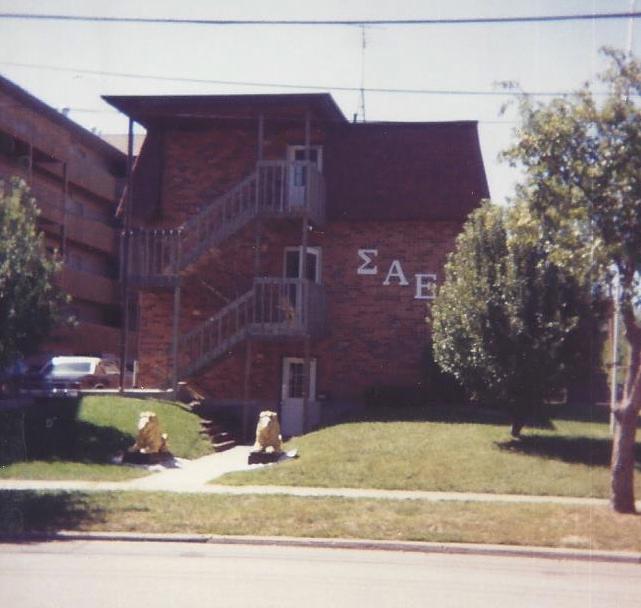
Subsequently, it was during the summer of 1992 that moving out of The Lodge became a surprising reality. I was one of a handful of SAEs that were living in the house that summer.
My brothers Joe Souhrada (IABE ’86), who served as chapter advisor, and Don Souhrada (IABE ’93) lived there as did Dr. Ken Jandik (IABE ’92) and Matt Penar (IABE ’93). Circumstances happened very quickly.
We had the herculean task of moving the entire chapter in a very short time with limited manpower or resources, plus there were several mandatory improvements to be made on the “new” house at 707 N. Dubuque St. before we could occupy it. The new house was located on the Iowa River, adjacent to the Sigma Chi house.
Needed repairs included upgrades to the fire alarm system, replacing broken windows, repairing drywall, installing fire-rated doors with closers and improvements to the kitchen. As we were making preparations for the move, I had great concerns about moving the lions without any equipment and only a skeleton crew.
These were the original Iowa Beta lions from the 1920s and are priceless to our Chapter. I was unsure how much the lions weighed and knew that trying to move them with muscle power alone was taking a risk, plus we didn’t have a truck or a trailer.
As an added bonus, the driveway at the new house was extremely steeped downhill and I couldn’t see a way to back a trailer down it.
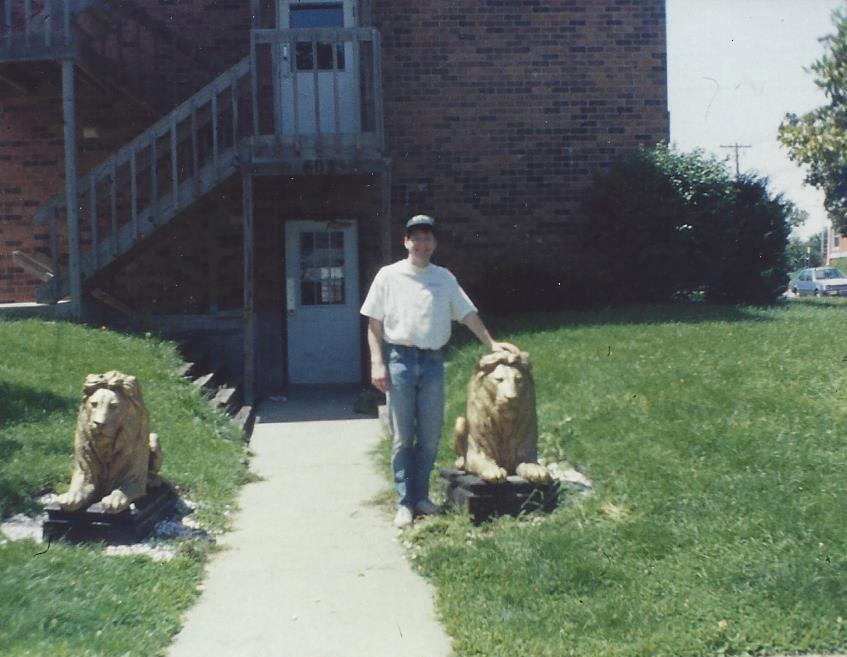
During my previous summers I had worked at a lumber yard and as part of my duties I drove a fork truck, so to me it made the most sense to find one and use it to move the lions across town.
There was an equipment rental company just south of The Lodge and across the railroad tracks, so I checked into a construction forklift and a few load straps to secure the lions.
I needed $85 to make it happen and as a poor undergrad I didn’t have that kind of cash, so I turned to Penar, our Eminent Treasurer. I presented the idea to Matt and he was quite reluctant to part with the cash as I’m sure he couldn’t make that kind of spend without authorization.
I told Matt that this was the only way and we needed to get the lions out of there quickly, we just didn’t have time for the formalities. Matt finally agreed and I think it was almost all the loose cash we had in the till.
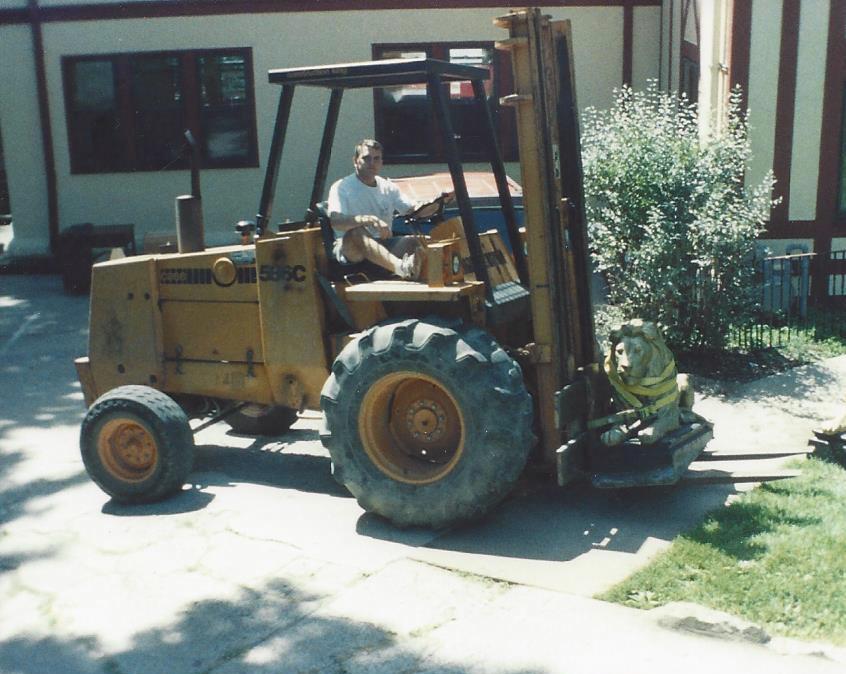
Moving day came and I remember being nervous that I’d be pulled over for driving construction equipment across town.
I picked up the first lion, strapped it onto the forks and drove it straight down Clinton Street right through the heart of Iowa City.
The forklift made the task easy – until I tried to drive it back up the hill at the new house. I had to make several running starts to get it out of there! Later I realized that I was in third gear the whole time so it’s no surprise that I was having troubles. The second lion was a snap!
Clean-up week came in August of 1992 and the rest of the chapter arrived to help out. We had a crew dedicated to setting the lions in place and stripping off the old paint. The lions were originally white and I have a photo showing them stripped down to bare concrete before repainting. Looking back, we should’ve left that white coating on but we did what we thought was best at the time.
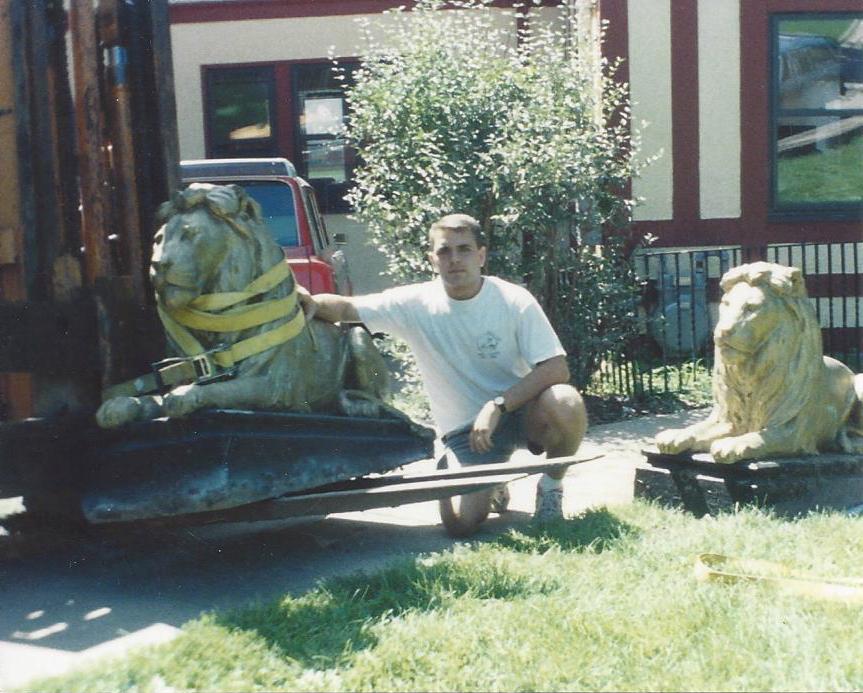
I believe there was a scrapbook with more pictures of the lions being moved and I had heard there was even an article in The Daily Iowan about it.
Just a few short years later, the chapter moved back to the house Iowa Beta built in 1926, located at 302 Ridgeland Avenue (303 N. Riverside Drive). And the lions made the move with the chapter.
In 2012, my dedication to the lions of Iowa Beta continued. The chapter had to make preparations to rent the house to Tau Kappa Epsilon in order for SAE to maintain income to pay the mortgage.
Something had to be done with the lions. Though the lions are still in good shape, they are 90-year-old concrete statues and fragile. I had great concerns about what would happen to them during the rental period and offered to store them at my home.
Fortunately the housing corporation had the great idea of building flower boxes around the lions to protect them. Thus, although not currently visible to the human eye at this time, they remain on guard watching the chapter house until SAE returns to campus in a few short years.
When that time comes, I am sure my love for the lions will compel me to drive to Iowa City and help bring them out of hibernation so they can be enjoyed by all.
Hannah Metzler leaves us with grace and dignity
This is what brother Mike Metzler (IABE '84) posted about his 17-year-old daughter, Hannah Metzler, on her Caring Bridge site after her long bout with brain cancer ended on March 27th:
Hannah has left us.
It was as peaceful, serene and comfortable as it could be. She rested comfortably in our family room. We regaled her with stories, told jokes and sang her to sleep.
She wanted to be at home with her family, and she was.
When it all ended today around 6 p.m., what some on Mike’s Irish side might call "happy hour," we broke open some of Hannah’s favorite sparkling grape juice and toasted her. We filled a special glass for her, and Luke tossed her drink on the ice on top of the pool cover. Hannah loved to swim. She loved the water and would be thrilled that she’s christening the pool for spring.
As you might expect, Hannah continues to give. She wanted very badly to donate her body to science, and that is what we’ll do. There will be an autopsy paying particular attention to her brain and spinal cord in the hope that scientists can learn something special.
We would like to thank you all for the continued support and thoughts and prayers. We are truly blessed to have you in our lives.
Quiz answer: The coat of arms, the flag and the badge
The coat of arms - William Leslie French was an expert in heraldry and designed the fraternity’s coat-of-arms.
A coat-of-arms is a unique heraldic device used to identify the bearer and represents high achievement and status.
Although most people commonly refer to this emblem as “the crest,” it is properly called a coat-of-arms. The crest is actually only the very top of the coat-of-arms. Our crest depicts Minerva, the lion and the Greek letters Phi Alpha in a wreath. The SAE coat-of-arms was adopted by the fraternity at the St. Louis Convention of 1896.
The flag - H.H. Cowan design the SAE flag and it was adopted in 1892 by the Chattanooga convention. According to William C. Levere’s Paragraph History of SAE, “the background of the flag is royal purple with a corner of old gold, the size and shape of the corner being the same as the blue field in the American flag.
Upon the gold corner appear the letters "Phi Alpha" in royal purple. In the center of the purple field are the letters "SAE" in gold. Immediately beneath the gold corner are the golden stars.”
The badge - John Barratt Rudulph was one of the Eight Founding Fathers of SAE. He created the SAE badge, the design of which was unanimously adopted without debate at the founding meeting of the fraternity on March 9, 1856.
The color of the first badge was Nazarene blue. The figures on the badge were gold and the gold sides were beveled. The size of the original badge was one and one-half inches long by fifteen-sixteenths-of-an-inch wide.
The badge is worn at an angle as a point of differentiation from other fraternities that also used a rhombic-shaped badge.
Did you know?
Since the refounding of the Iowa Beta chapter in the early 1980s, 30 men have served as Eminent Archon. Initially, terms of office were one semester in length and a maximum of two semesters could be served. In 1988, the terms were changed to one year in length. Tim Jasper (IABE '99) served in office the longest, being elected to two one-year terms.
Name: Semester(s) served:
None 1982
Kurt Faubion May 1983
Charlie Souhrada Fall 1983
Wayne Schwertley Spring 1984, Fall 1984
Marc Rosenow Spring 1985, Fall 1985
Tim Miller Spring 1986
Bill Stelter Fall 1986, Spring 1987
Tom Halterman Fall 1987, 1988
Dan Schrock 1989
Steve Cary 1990
Shawn Mingus 1991
Phil Rankin 1992
Don Souhrada 1993
Erik Daley 1994
Todd M. Johnson 1995
Sean Denney 1996
Tim Jasper 1997, 1998
Brad Griffith 1999
Ryan Redington 2000
Michael Mlakar 2001
Steven Theiss 2002
Marc Hatfield 2003
Ryan Young 2004
Christopher Meade 2005
Ryan Howard 2006
Sean Carr 2007
Matt Halverson 2008
Rick Yorke 2009
Matt Miller 2010
Alex Motola 2011
Mike Weaver 2012
Did you know?
The Iowa Beta Alumni Association is now the second-largest SAE alumni group in the country. Our objectives are to reengage and support our alumni, rebuild the Iowa Beta chapter, and provide scholarship opportunities for undergraduate SAEs.
Most importantly, we want to make you proud of Iowa Beta again. But, we need your help…
Joining the Iowa Beta Alumni Association is the primary way that most alumni can participate. It is fast and easy to do. No fees are required.
Please support Iowa Beta by joining today. Just click the button below and thank you making Iowa Beta stronger!
Getting on the stick
Jeff Formeller (IABE '14) is the captain of the University of Iowa lacrosse team. He is one of a handful of SAEs on the team. Formeller, who has a double major in finance and economics, served as Eminent Deputy Archon, is an OnIowa! student leader, a peer advisor for underprivileged youth, a member of the Career Leadership Academy, and participates in various philanthropic charities including the UI Dance Marathon and volunteering for United Action for Youth. He maintains a 3.7 GPA and is a graduate of the Krause Fund. He is scheduled to graduate in May.
We are global!
Iowa Beta has gone global! The Iowa Beta Alumni Association has been sending monthly e-newsletters to alumni for whom we have valid email addresses for nearly one year.
In that time, brothers from all over the world have been keeping up to date on Iowa Beta developments. In addition to the United States, Iowa Beta brothers have been reading thee-newsletters in the following countries:
- Japan
- Germany
- Canada
- Mexico
- United Kingdom
- Portugal
- Israel
- Switzerland
- Dominican Republic
- Philippines
- Russia
- Hong Kong
Thank you for your support!
National SAE News
Golf tournament
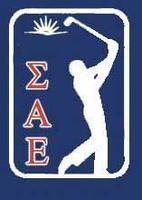
The 2014 Sigma Alpha Epsilon National Amateur Golf Tournament is slated for
May 15-17 at Perdido Bay Golf Club in Pensacola, Fla. Each year, the Pensacola Area Alumni Association hosts the annual golf tournament for brothers to compete in a friendly game with each other. Click HERE for the registration form and more details. Click HERE to see photos from the 2013 tournament.
Softball in New Orleans

Each summer, the New Orleans Alumni Association sponsors the SAE World Series, a softball tournament that allows brothers to field teams and play each other for the title of Eminent Supreme Champions. The 2014 tournament is scheduled for June 20-21. To read more about the tournament or to see coverage of previous years, go to www.saeworldseries.com.
